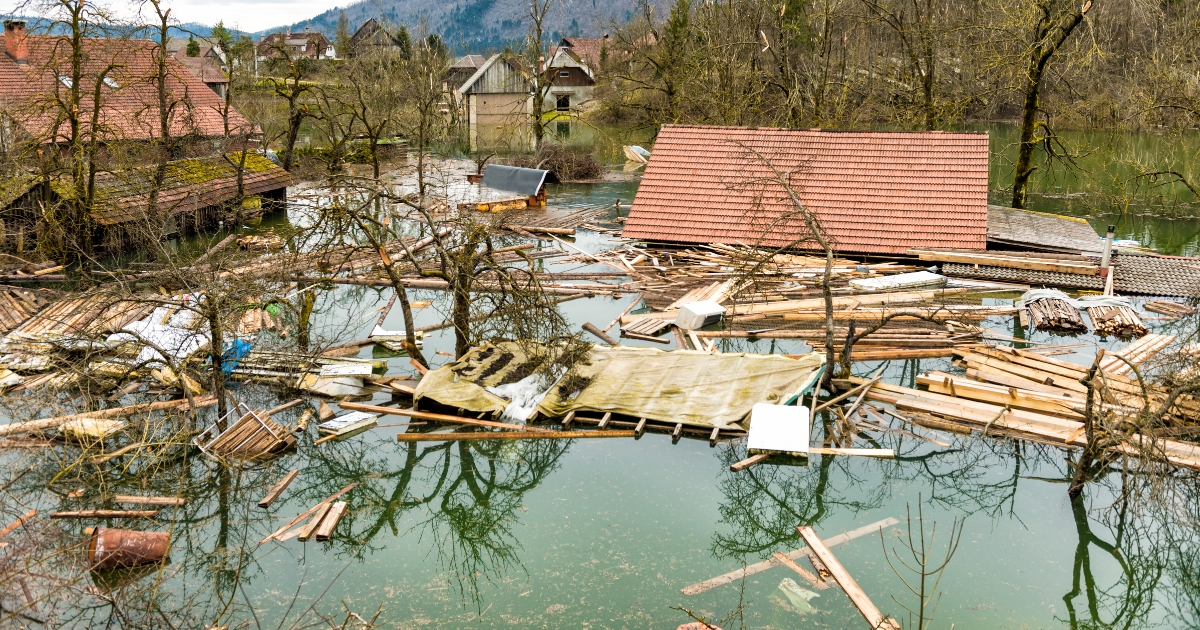Five Keys to Securing Disaster Financial Assistance
For municipal emergency managers and Chief and Council, applying for disaster recovery funding typically requires:
- Understanding how the disaster has impacted your community.
- Creating short-, medium-, and long-term recovery plans.
- Developing relationships with points of contact at funding organizations.
- Putting together a proposal for funding that communicates the scope of need.
In this article, we’ll discuss five keys to successfully securing financial aid for disaster recovery efforts in your community.

1. Get Familiar with Disaster Financial Assistance Options
Part of your disaster preparedness plan should be familiarizing yourself with the funding options available in the wake of an emergency. Having as much administrative work out of the way before disaster strikes makes it easier to execute your response and recovery plan. Many disaster financial assistance programs are time-sensitive. The quicker you can apply for funding, the more likely you are to secure the financial resources your community will need.
There are different options (and requirements) for funding for Indigenous communities and non-Indigenous communities.
Most provinces have a provincial disaster assistance program (PDAP) which is generally available for municipalities and small communities. For example, BC disaster financial assistance is provided by the provincial government to both Indigenous and non-Indigenous communities that have been impacted by eligible disaster events.
In Alberta, the provincial Disaster Recovery Program only provides funding to municipal governments and Metis settlements. Indigenous communities must contact Indigenous Services Canada (ISC) to apply for financial assistance through the Emergency Management Assistance Program (EMAP).

2. Set Up Agreements with Funding Organizations
In the wake of a devastating emergency, some individuals may need immediate aid to get their basic needs met, such as those who have been displaced. Canadian disaster relief organizations or non-profits can provide immediate support services to individuals within your community.
It’s a good idea to set up agreements with organizations before a disaster is likely to happen. For example, by establishing an agreement with the Red Cross, communities can benefit from resources provided by its community emergency preparedness fund ahead of disasters. Through an agreement, they can also rely on the Red Cross to provide timely support in emergency response and recovery. Having agreements in place also helps emergency managers and their teams understand how much funding is being accessed during disaster response. With a pre-existing relationship, the organization can provide better visibility into community needs. This gives emergency management teams insights they can incorporate into applications for funding from the government or other non-profits.

3. Conduct a Thorough Post-Disaster Needs Assessment
The post-disaster needs assessment (PDNA) is the foundation of disaster recovery planning. A PDNA requires you to go out into the community to take a look at the damage and communicate with engineers or essential service providers to assess the damage to public structures within the community.
An effective PDNA also includes community engagement. This is where leaders meet with members of the community to discuss how the disaster has affected them and what their recovery priorities are. This phase of the PDNA illuminates the path forward for recovery planning. It’s an especially important step for communities whose cultural, spiritual, and psychological well-being has suffered in the wake of disaster.
Many interconnected factors must be taken into consideration when conducting a PDNA. An emergency management consultant who has experience assessing a community after a disaster can spot potential risks and opportunities. They can also provide a more holistic view of a disaster’s impact and uncover important details to include in the recovery strategy and funding application proposal.

4. Create a Strong Strategy and Action Plan
Applying for funding from Canadian disaster relief organizations or a provincial disaster assistance program requires you to create a proposal that clearly outlines what you will use the money for. It’s critical to provide an in-depth picture of how funding will support the community.
The strategy and action plan is the backbone of an impactful proposal. This plan must include short-, medium-, and long-term recovery goals. A strategy and action plan demonstrates to funding decision-makers that they are providing the appropriate amount to your community. It also helps your community leaders ensure the funds they receive are used as effectively as possible.
Having a strategy and action plan that covers short-, medium-, and long-term needs has major benefits. Communities can often secure more funding by leveraging resources they’ll use over the long-term, such as a community emergency preparedness fund. Funding for emergency planning is usually used ahead of disasters. However, if you develop a comprehensive strategy to mitigate the risk of future disasters as part of your recovery plan, you may be able to qualify for this type of funding.

5. Write a Comprehensive Funding Proposal
A proposal is part of the application for disaster financial assistance. It’s a document that outlines how much funding you’re looking for, what you will use the funding for, and why it’s important. It incorporates insights from your PDNA as well as an outline of your strategy and action plan.
Proposals must follow a structure and include jargon that government administrators are familiar with. Navigating the administrative process around applying for funding can be a challenge, especially if you’ve never done it before. Engaging someone who has experience writing proposals can help you effectively communicate what your community needs.
Creating a proposal also requires you to communicate with your point of contact at ISC or the government to make sure that you’re asking for the appropriate amount of funding and that you haven’t missed anything. These points of contact can also give you more information about funding avenues you may not have considered. It’s a great idea to have someone on your team who can build a close relationship with your point of contact to increase the impact of the proposal.
Secure Disaster Recovery Funding for Your Community
Applying for financial aid when disaster strikes is critical for ensuring the safety and resilience of your community. Rebecca Innes Consulting can help you secure funding by facilitating the entire process from PDNA and strategic planning to uncovering the best funding avenues and creating proposals. With extensive experience helping Indigenous communities through disaster, we can support communication between ICS and government points of contact to get disaster financial assistance that meets your needs.
RIC Blogs
What Now? Mastering Your Community’s Disaster Recovery Plan
Disasters have a deep, lasting impact on individuals and their communities. An effective plan that incorporates all components of disaster recovery considers the weeks, months, and years after the initial emergency has occurred. Disasters damage infrastructure and...










